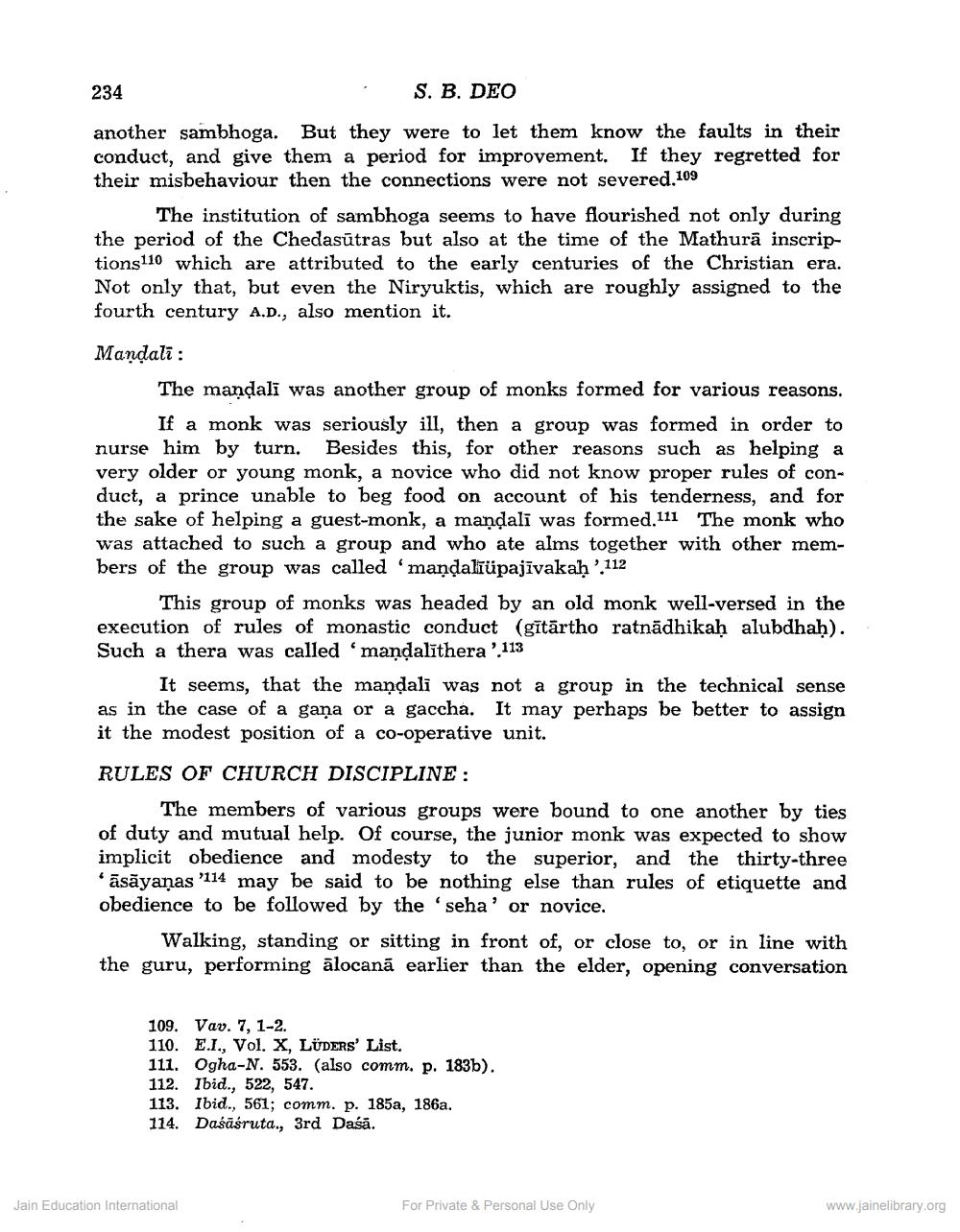________________
234
•
S. B. DEO
another sambhoga. But they were to let them know the faults in their conduct, and give them a period for improvement. If they regretted for their misbehaviour then the connections were not severed.109
The institution of sambhoga seems to have flourished not only during the period of the Chedasūtras but also at the time of the Mathurā inscriptions110 which are attributed to the early centuries of the Christian era. Not only that, but even the Niryuktis, which are roughly assigned to the fourth century A.D., also mention it.
Mandali:
The mandalī was another group of monks formed for various reasons.
If a monk was seriously ill, then a group was formed in order to nurse him by turn. Besides this, for other reasons such as helping a very older or young monk, a novice who did not know proper rules of conduct, a prince unable to beg food on account of his tenderness, and for the sake of helping a guest-monk, a mandalī was formed.111 The monk who was attached to such a group and who ate alms together with other members of the group was called 'mandalīüpajīvakah '.112
This group of monks was headed by an old monk well-versed in the execution of rules of monastic conduct (gītārtho ratnādhikaḥ alubdhah). Such a thera was called 'mandalīthera '.113
It seems, that the mandali was not a group in the technical sense as in the case of a gana or a gaccha. It may perhaps be better to assign it the modest position of a co-operative unit. RULES OF CHURCH DISCIPLINE :
The members of various groups were bound to one another by ties of duty and mutual help. Of course, the junior monk was expected to show implicit obedience and modesty to the superior, and the thirty-three ‘āsāyaṇas '114 may be said to be nothing else than rules of etiquette and obedience to be followed by the 'seha' or novice.
Walking, standing or sitting in front of, or close to, or in line with the guru, performing alocanā earlier than the elder, opening conversation
109. Vav. 7, 1-2. 110. E.I., Vol. X, LÜDERS' List. 111. Ogha-N. 553. (also comm. p. 183b). 112. Ibid., 522, 547. 113. Ibid., 561; comm. p. 185a, 186a. 114. Daśāśruta., 3rd Daśā.
Jain Education International
For Private & Personal Use Only
www.jainelibrary.org




